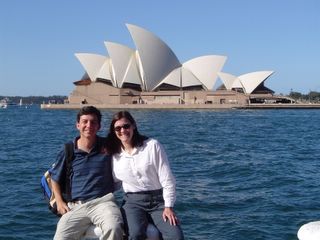War and Peace in Saigon
Our final stop in Vietnam was in Saigon, or Ho Chi Minh City. We also traveled there by bus - this one an overnight ride that arrived at 6 a.m. Not exactly luxurious, but when you're traveling for several months those $6 bus fares help stretch your budget considerably.
Saigon is a bigger, brasher version of Hanoi. There is an obvious cultural different between the North and South regions of Vietnam, which we could see as we traveled down the length of the country. The North is a more traditional, conservative culture when compared to the South. Saigon, you might say, is the New York of Vietnam - it's busier, it's more commercial, and the people are more direct.
Saigon is also a good place to learn more about the Vietnam War. It's not always pleasant, but it is interesting. One afternoon, we visited the War Remnants Museum. Apparently, it used to be called the Museum of American and Chinese War Crimes, but the name was toned down for the benefit of tourists. In addition to the basic displays of tanks and planes, there are numerous grisly pictures of victims of the war - dead soldiers, villagers being shot, people being thrown out of helicopters, and the deformed victims of the Agent Orange defoliation efforts. It's a one-sided display of the Vietnam War, for sure, but it certainly drives home the point that war is hell, no matter the cause. Very strange to be an American at that museum - especially when an armless victim of the war tries to sell you postcards and asks the question that all touts ask in this country, "Where you from?" How do you even answer?
Remarkably, though, there doesn't seem to be any animosity against the U.S. for the war, at least among the people we met. A large percentage of the Vietnamese population is under 30-years-old, so they have no memory of the war and they simply want to move forward rather than reflect on the past. People were quite friendly to us and not a single person ever expressed anything negative about America. Quite the opposite, in fact - most people were excited to meet foreigners in general, and Americans in particular.
Also while in Saigon, we took a half-day tour to the Cu Chi tunnels. These tunnels were dug in the jungle and used by Vietnamese soldiers during the war as a place to live and hide, and as a staging ground for attacks. They are pretty ingeniously designed and camouflaged. Here is a picture of a Vietnamese slipping into one of the tunnel entrances...

We had the chance to crawl through the tunnels for about 30 yards - the entrance was widened for Western tourists and we had to crouch or crawl through the dark passages. Very claustrophobic and we were happy to get back above ground.
On a less militaristic note -before leaving Saigon, we also spent time with some new Australian friends, Peter and Barbara Storey. We initially met them on the Halong Bay boat. Then, quite by accident, we ran into them almost a week later having drinks along the beach in Nha Trang. Even more remarkably, we then bumped into them on a street corner in Saigon - quite a feat in a city of several million people, since our hotels were a taxi ride away from each other. It's not uncommon to run into the same travelers here and there, since people frequent the same sites. But after all that serendipity, we had to have at least one planned meeting and so we met for dinner and drinks before leaving the country. Next stop for us - Cambodia.










